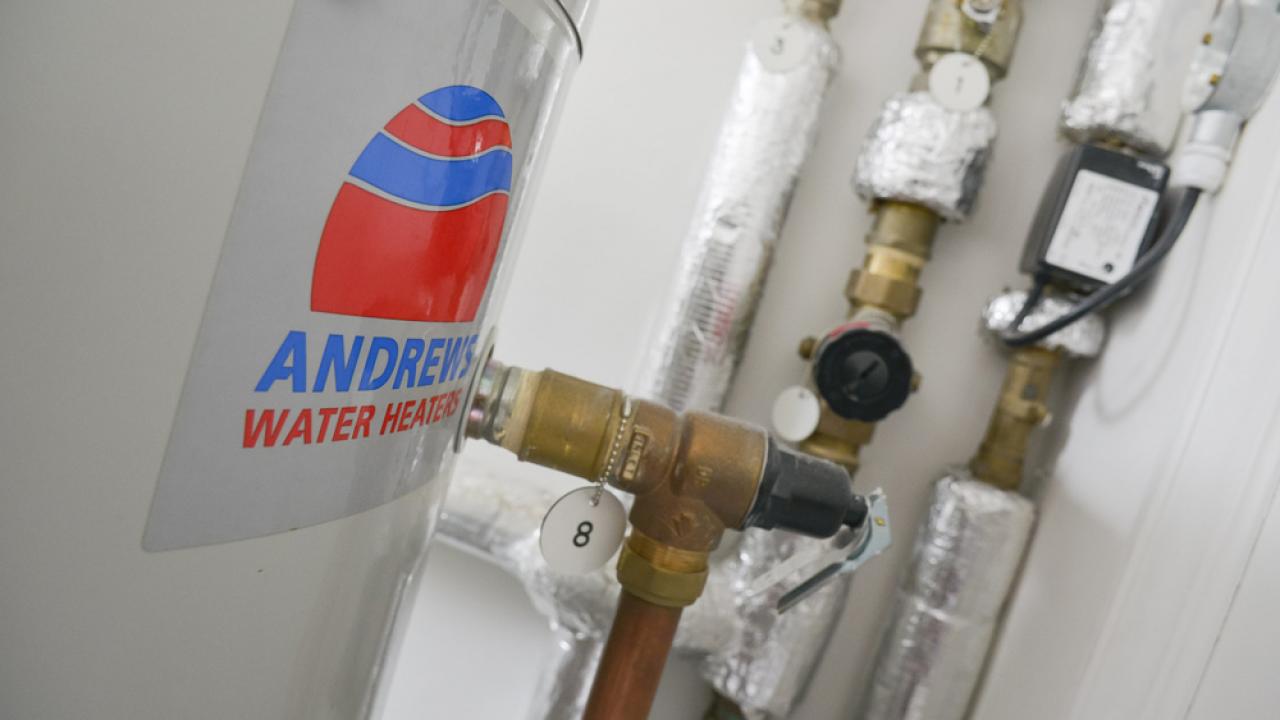

Improving efficiency and sustainability in offices
A growing interest in health and fitness has led to more people choosing to cycle to work or take a lunchtime gym class.
Dan Martindale, sales director at Andrews Water Heaters, explains the implications this has upon the specification of heating systems.
In major cities, cycling to work has seen considerable growth. Between 2001 and 2011, the number of people living in London who cycled to work more than doubled from 77,000 to 155,000. A survey by the British Council for Offices also identified that 92.6% of respondents now think that showers are the most desirable workplace facility. What’s more, over half of the respondents said that the quality and availability of workplace cycle facilities influence their career decisions.
Healthy and fit employees tend to be more productive and have fewer sick days3, so there is a compelling commercial argument for employers to encourage a more active lifestyle. Therefore, installing new showering facilities and upgrading the heating system to cope with increased demand may have some commercial benefits. However, if the heating system is incorrectly specified and operates inefficiently, the resulting rise in energy costs can impact on a business’ bottom line.
Installing a higher output boiler would help to accommodate greater demand for hot water. However, in modern buildings where the central heating can run at lower temperatures for a shorter time due to better insulation and lower heat losses, additional space heating is unlikely to be needed. A higher output boiler may therefore be oversized for a building’s overall heating requirements, resulting in energy wastage.
One solution is to install a separate, dedicated water heater to cater for the hot water demand without wasting excess energy on heating. Separate space heating and hot water systems generally provide lower running costs, energy consumption and carbon emissions. This is because the water heater’s output can be more suitably matched to hot water energy load. On top of this, since water is heated from a low mains temperature (at a supply temperature of around 10 to 60 degrees Celsius), high levels of condensing can be achieved, contributing to further savings. The heating system can also be switched off during summer months to reduce the electrical consumption from boilers, primary pumps and secondary pumps.
So, which is the best type of water heater to select to optimise the system?
A direct gas-fired storage water heater is perfect for commercial applications such as office buildings. Typically, the heat exchanger is located within the storage cylinder, so heat is transferred directly into the stored water. To further improve efficiency levels, this sort of water heater is designed to heat water via energy from the combustion process and to collect latent heat from the condensing of the flue gases from within the heat exchanger.
It is critically important to size the direct gas-fired water heater correctly. Too big and it will waste energy, too small and it will not produce enough hot water. Thankfully, help is available for this. The CIBSE Public Health & Plumbing Engineering guide part G1 provides assistance, and progressive manufacturers such as Andrews Water Heaters offer helpful sizing calculation tools.
Higher demand for hot water doesn’t have to come at the expense of energy efficiency. Correctly sized and specified systems lead to facilities that are truly fit for purpose and make smart business sense.

